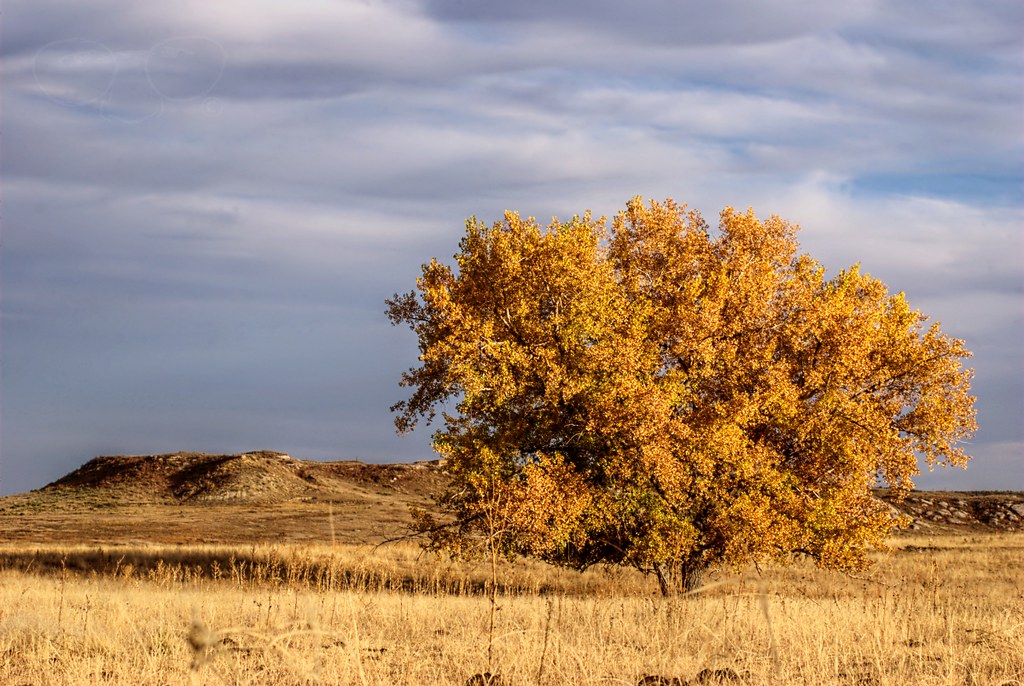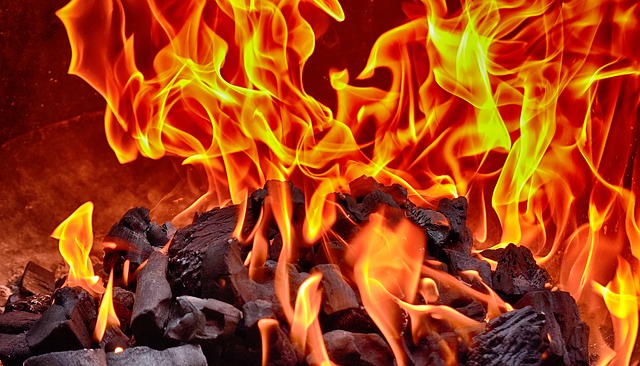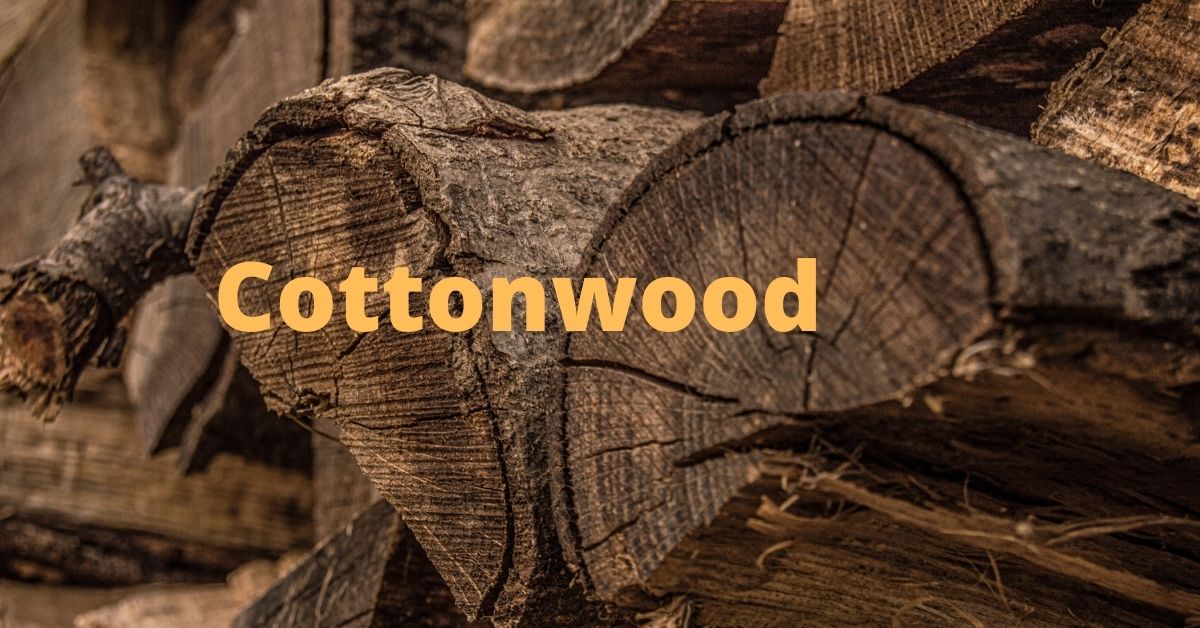Not all woods work as good firewood; however, you must work with what’s available sometimes. Cottonwood is the fastest-growing tree in the United States.
Contents
Is Cottonwood Good Firewood
Cottonwood is a decent firewood choice despite having a low BTU than average. it has a BTU rating of 15.8-16.8. widely available in most areas at a low price. However, it is essential to opt for seasoned wood to avoid foul odors and suffocating smog.
It requires a lot of moisture, a humid environment, and scorching heat to rise. They look like small blobs of snow when they are growing on small trees.
However, a cottonwood tree does not only look beautiful; it has different properties as well. It is cheap in most areas of the world due to its vast presence in east and south America. On the other hand, it is an excellent raw material for furniture, barns, and houses.
It is not the best firewood choice, but it is safe and has excellent coaling properties. It works ideally for students who are fond of camping.
There are various benefits to the tree as its sap is beneficial for medical purposes.
Is cottonwood good firewood? It is the real question which most people need an answer to when going camping or hosting a bonfire.
Types Of Cottonwood

Cottonwood also has a few types that you will commonly discover in the United States. Different kinds of cottonwoods burn differently than usual.
Hence, it is crucial to select your cottonwood mindfully, the one that burns well.
Fremont’s Cottonwood
The Fremont’s firewood is a special kind that is a part of many barns and house structures. Cottonwood is usually grown in the Southern part of America,
where heat and humidity are moderate. Its leaves have a different look than the eastern cottonwood trees.
However, it acts as a strong base for most houses and furniture.
Eastern Cottonwood
As you know by the name, Eastern cottonwood usually Flourished in the eastern part of America. You can find it in Southern Canada, where the temperature and humidity levels are adequate for tree growth.
The tree has a thick and coarse trunk that appears rough. The tree leaves are triangular and have a tooth-like structure.
It is moderately good for fire as it splits easily when not appropriately seasoned. However, it gives clear and odor-free fire when appropriately seasoned.
On the contrary, if you do not season wood properly, it can provide suffocating smog.
is Cottonwood Good To Burn

You cannot burn the cottonwood straight out of the tree. It is essential to have selected a treated wood with adequate BTU so that your purpose of setting up fire can be fulfilled.
BTU is the British Thermal Unit calculator to estimate the heat produced per unit when burning the wood. When selecting cottonwood, always opt for hardwood rather than softwood.
For the cottonwood BTU, it should be somewhere between 15.8 to 20 per cord.
However, if you select a BTU lower than 15.6, the cottonwood fire would not be as intense as you wish it to be. You must never ignore a wood’s BTU.
Cottonwood, in combination with other kinds of woods, burns faster and provides a long-lasting burn.
is cottonwood a hardwood
Cottonwood is Classified as hard wood because it is a deciduous tree, but its soft density, making a poor choice as firewood.
How long do you season Cottonwood?
You must be aware that cottonwood requires humid moisture and high temperature to grow. In the middle of growing, the wood retains a lot of moisture, making wood hard to burn its raw form.
Hence, you must dry before setting a campfire or using it for utility purposes. However, it is a better idea to split the wood once it is dry.
It is super easy to split as the moisture allows the cutting tool to penetrate deeply. It takes about 3 to 6 months to dry the cottonwood and make it ready to use.
On the other hand, the cottonwood also needs to be seasoned before you use it. The seasoning process For Round Form takes up to 2 years or a minimum of 1.
It is essential to act responsibly towards the burning fire. A non-dried wood does not catch fire easily. Even if it catches fire, it is a hassle to keep it burning.
The fire blows out within seconds of burning. If you have to use the cottonwood next year, you have to prepare the wood now.
Primarily cottonwood is used for various commercial purposes. Always try to use seasoned wood to clear out the smog and reduce pollution.
Is Cottonwood Good for Cooking
Cottonwood is one of the woods that is frequently used for cooking. People use this wood for making foods and bonfires.
It can maintain a steady temperature which makes it easier to make food. It is astonishing to observe how fast the wood burns and the food cooks on it.
People generally take cottonwood when going fishing. You can quickly grill fish on the mild fire without burning your food.
People think that cottonwood does not provide adequate heat. While it may be true, it is genuinely an affordable option, especially if you are running low on cash.
Does Cottonwood Burn Clean
Cottonwood is good firewood, and it burns pretty clean. But it depends on the type of cottonwood that you are using.
If you are using cottonwood that’s green in color, you will find it hard to burn it. Moreover, green cottonwood smolders and makes smoke.
This is because of the large amount of moisture stored in it. On the other hand, if you are using dry cottonwood, it will burn amazing. The drier your cottonwood is, the better it will burn.
What Does Cottonwood Flame Smell like?
Some people find the fire of cottonwood and its flame unpleasant when it comes to smell. In most cases, this is because of poorly seasoned cottonwoods.
In addition to this, the green-colored cottonwood smells quite bad even before burning. The smell gets even worse after it is burned.
The cottonwood flame usually smells like cat urine. That’s how bad it smells. Because of this, it’s not advisable to burn green cottonwood in the fireplace of houses.
Benefits of cottonwood
Easy to handle
It is challenging to handle wood significantly when cutting it. However, the best thing about cottonwood is its ability to cut and split it. It may not have a suitable BTU, but even a layperson can handle the wood and split it.
On the other hand, it is essential to let the cottonwood dry before you season it. If you split the wood before the sap dries, then it would be a lot easier.
Grows faster
Cottonwood is one of the fastest-growing trees in the United States. When cottonwood fosters in adequate humidity-level and temperature, it grows even faster.
Hence, cottonwood makes an excellent raw material for making barns, houses, furniture, and even setting a fire. It grows more than 20-inches in a span of little time.
Better coaling
One of the best qualities of cottonwood is its ability to burn faster. It also has remarkable coaling properties, which makes it an ideal choice for cooking.
It can maintain a consistent temperature, which does not make your food burn. It also does not go out of control; hence, people use it as a campfire for maximum heat and safety.
What are the disadvantages of using cottonwood?
There are a few drawbacks of using cottonwood as firewood. Let’s have a look at some disadvantages that are necessary to consider.
Below average BTU
If you compare the cottonwood’s BTU with other trees, you will notice that it’s low. When comparing its BTU with a Mulberry tree, it is lower than 10.
Even a poor-quality wood has a BTU of more than 25. It provides a low-quality flame; however, cottonwood works for most people who want to use it for a small duration.
Takes longer to dry
One of the main drawbacks of cottonwood is that it takes longer to dry. Cottonwood is grown in a highly humid atmosphere. It tends to retain a lot of moisture which can make it come under the category of softwood.
Softwood is not ideal for lighting fire not because it is harder to lit; it does not retain fire. There is a lot of fog and smog when you burn softwood.
Hence, it takes at least six months to dry and another year to season the wood.

